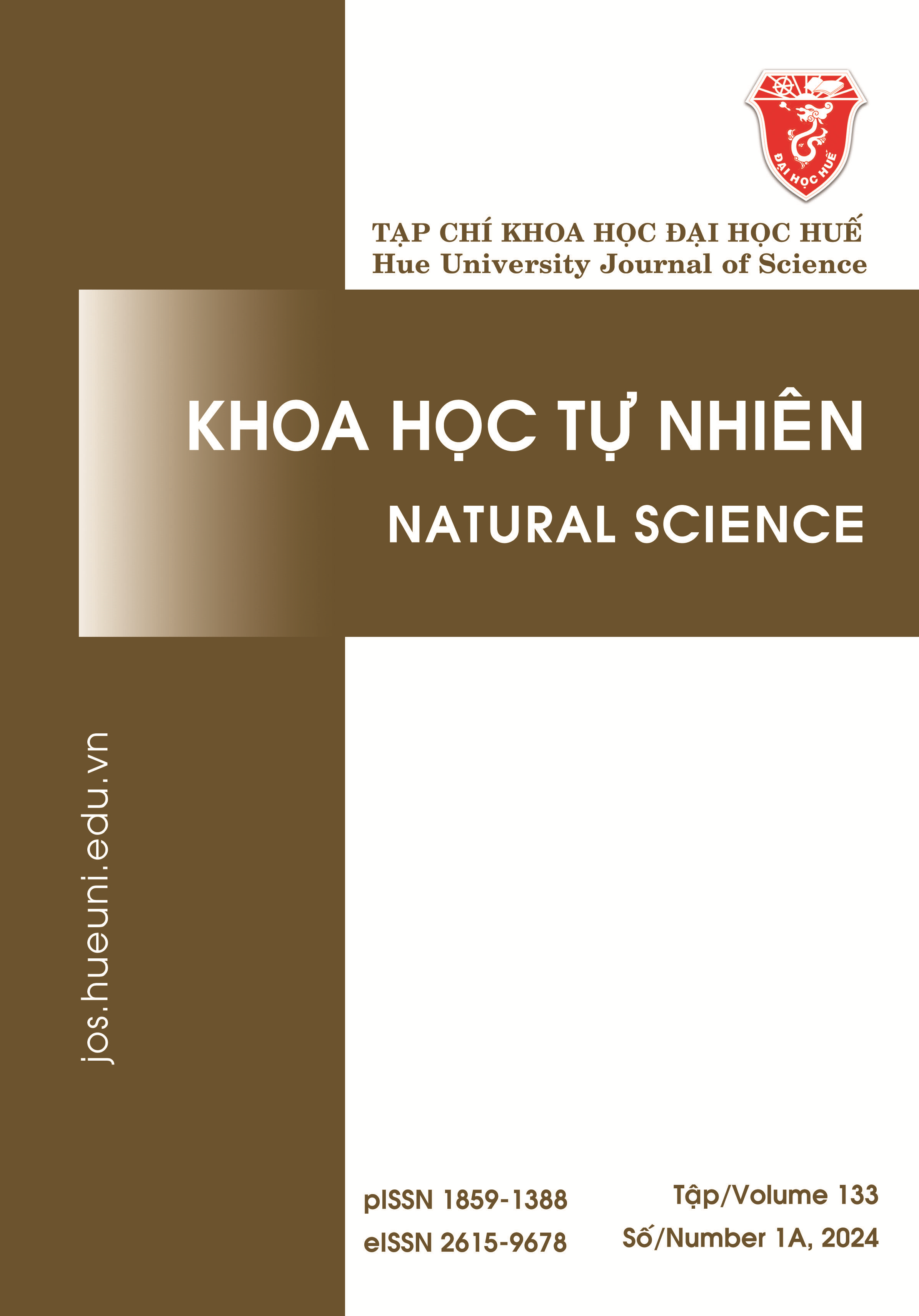Abstract
Leptocarpus disjunctus Mast., is a species of grass that grows naturally in the sandy coastal areas of central Vietnam. This species has strong vitality, growing singly in clumps or growing together, covering the surface of the sand. Adaptability and ability to withstand flooding and drought are very high. The study aimed to evaluate the potential of naturally growing L. disjunctus as food for ruminants through the assessment criteria of the highest plant height, canopy height, green matter yield, dry matter yield, protein yield, and chemical composition. The experiment was conducted in the sandy soils of Le Thuy District, Quang Binh Province, and Quang Thai District, Thua Thien Hue Province. At each location, five plots were selected to implement experiments and conducted over two seasons, dry season and rainy season. The highest plant height ranged from 102.58 - 104.82cm, and canopy height ranged from 80.26 - 81.57cm. Green matter yield, dry matter yield, and protein yield were from 10.3 - 12.4 tons/ha/batch, 4.1 - 4.8 tons/ha/batch, and 0.6 - 0.7 tons/ha/batch, respectively. Chemical composition including dry matter (DM) 43.55%, CP 5.70%, EE 1.72%, CF 43.23%, ADF 43.64%, NDF 69.09%, and total minerals 2.14%, calculated as a percent of DM. In conclusion, the results showed that L. disjunctus growing naturally in poor sandy soils and harsh weather in Quang Binh and Thua Thien Hue provinces could be used as food for ruminants.
References
- AOAC. Official Methods of Analysis. 15th ed. Washington, DC (US): Association of Official Analytical Chemists; 1990
- Briggs BG. The restiads invade the north: the diaspora of the Restionaceae. In: Metcalfe I, Smith JM, editors. Faunal and floral migrations and evolution in SE Asia–Australasia. Lisse: Balkema Publishers; 2001. p. 237-241.
- Damjuti W, Chanida P, Tingli L, Nijsiri R. Potential of Leptocarpus Disjunctus as Hypnotic Plant: Study on Drosophila Melanogaster and Mice Models. Journal of Health Research. 2017;31(3):219-224.
- Thao HX, Thao TTH, Lan NK. Diversity of flowering plants in natural vegetation in Quang Tri province’s sand dune region. Hue University Journal of Science: Natural Science. 2020;129(1C):31-42.
- Quân ĐM, Chuộng NM, Giẻo PH, Thìn NN. Tính đa đạng của thực vật ở núi Hàm Rồng của Vườn Quốc gia Phú Quốc. Tạp chí khoa học Đại học Cần Thơ. 2012;21a:92-104.
- Van Soest PJ, Robertson JB, Lewis BA. Methods for Dietary Fiber, Neutral Detergent Fiber, and Nonstarch Polysaccharides in Relation to Animal Nutrition. Journal of Dairy Science. 1991;74(10):3583-97.
- Tập VH. Đánh giá và phân tích các chỉ tiêu môi trường đất. 2016. Available from: http://moitruongviet.edu.vn/danh-gia-va-phan-tich-cac-chi-tieu-moi-truong-dat/
- Nhân NTH, Hớn NV, Ngữ NT, Diễn ĐTT. Ảnh hưởng của khoảng cách trồng đến sinh trưởng, phát triển và năng suất của cỏ Paspalum atratum trong điều kiện ngập ngoài đồng ruộng. Tạp chí Khoa học Công nghệ Chăn nuôi. 2011;31:81-90.
- Tạo HV, Viên TĐ. Khả năng sản xuất và chất lượng của một số giống cỏ và cây thức ăn gia súc cho bò sữa tại Nghĩa Đàn, Nghệ An. Tạp chí Khoa học và Phát triển. 2012;10:84-94.
- Bình NTH, Thủy NT, Doanh BD, Hải ĐH, Hằng NT, Tuấn BQ. Năng suất và giá trị dinh dưỡng của cỏ Taiwanese napier nhập từ Thái Lan trồng tại Học viện Nông nghiệp Việt Nam. Tạp chí Nông nghiệp Việt Nam. 2017;15(4):462-470.
- Nghị NT, Tuấn ĐT, Mùi NT. Nghiên cứu khả năng phát triển bộ giống cây thức ăn cho gia súc chất lượng cao tại Bình Định. 2008.
- Thăng TV, Lan NT, Cần TV, Đại NV. Xác định giá trị dinh dưỡng của một số loại thức ăn phổ biến nuôi trâu bằng phương pháp in vitro gas production. Tạp chí Khoa học và Công nghệ Đại học Thái Nguyên. 2019;02(09):99-106.
- Mùi NT, Hanh ĐĐ, Lợi NV. Khảo nghiệm xây dựng mô hình sản xuất giống và thức ăn xanh trên cơ sở mở rộng diện tích thâm canh giống cỏ tốt phục vụ chăn nuôi bò tại khu vực Trung du, miền núi phía Bắc. Hà Nội: Báo cáo Khoa học Viện Chăn nuôi; 2006. p. 1-9.
- Dung NNX, Mãnh LH, Nhi NTM. Thành phần hóa học và giá trị dinh dưỡng của một số giống cây thức ăn gia súc họ hòa thảo và họ đậu trồng tại Thành phố Cần Thơ. Tạp chí Khoa học Trường Đại học Cần Thơ. 2007;7:183-192.
- Thu NV. Ảnh hưởng của các mức độ protein thô trong khẩu phần lên sự tiêu thụ thức ăn, tỷ lệ tiêu hóa dưỡng chất, các thông số dạ cỏ, ni tơ tích lũy và tăng trọng của bò ta. Tạp chí Khoa học Đại học Cần Thơ. 2010;15a:125-132.
- Cương VC, Cương PK, Huệ PT, Cường PH. Ảnh hưởng của các nguồn xơ khác nhau trong khẩu phần vỗ béo đến tăng trọng, hiệu quả sử dụng thức ăn của bò lai Sind tại Đắc Lắk. Tạp chí Khoa học Công nghệ Chăn nuôi. 2007;4:36-41.

This work is licensed under a Creative Commons Attribution-ShareAlike 4.0 International License.
Copyright (c) 2024 Array




